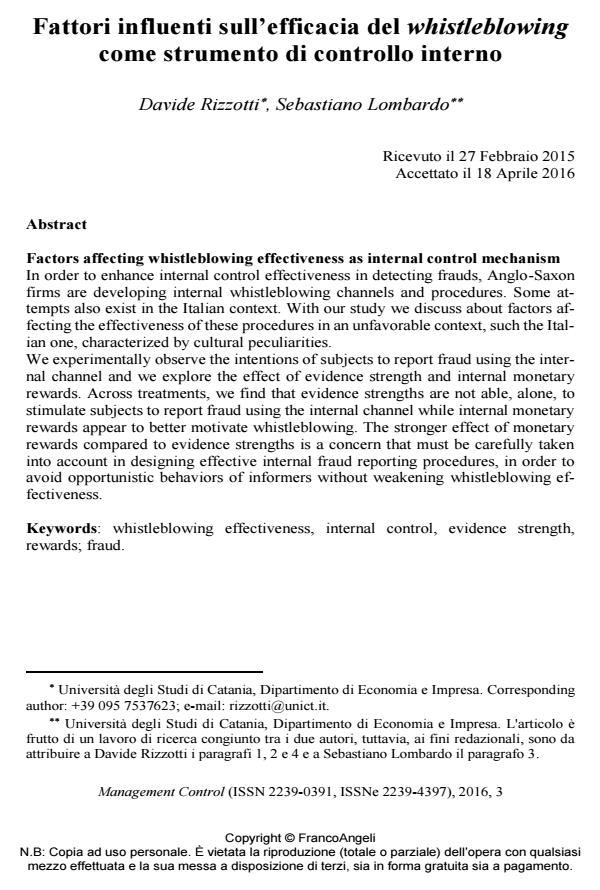Factors affecting whistleblowing effectiveness as internal control mechanism
Journal title MANAGEMENT CONTROL
Author/s Davide Rizzotti, sebastiano Lombardo
Publishing Year 2016 Issue 2016/3
Language Italian Pages 18 P. 9-26 File size 610 KB
DOI 10.3280/MACO2016-003002
DOI is like a bar code for intellectual property: to have more infomation
click here
Below, you can see the article first page
If you want to buy this article in PDF format, you can do it, following the instructions to buy download credits

FrancoAngeli is member of Publishers International Linking Association, Inc (PILA), a not-for-profit association which run the CrossRef service enabling links to and from online scholarly content.
In order to enhance internal control effectiveness in detecting frauds, Anglo-Saxon firms are developing internal whistleblowing channels and procedures. Some attempts also exist in the Italian context. With our study we discuss about factors affecting the effectiveness of these procedures in an unfavorable context, such the Italian one, characterized by cultural peculiarities. We experimentally observe the intentions of subjects to report fraud using the internal channel and we explore the effect of evidence strength and internal monetary rewards. Across treatments, we find that evidence strengths are not able, alone, to stimulate subjects to report fraud using the internal channel while internal monetary rewards appear to better motivate whistleblowing. The stronger effect of monetary rewards compared to evidence strengths is a concern that must be carefully taken into account in designing effective internal fraud reporting procedures, in order to avoid opportunistic behaviors of informers without weakening whistleblowing effectiveness.
Keywords: Whistleblowing effectiveness, internal control, evidence strength, rewards; fraud.
- Corporate social responsibility and technological perspectives in healthcare: An exploratory analysis of the evolution of the anti‐corruption system through multiple case studies Maura Campra, Paolo Esposito, Valerio Brescia, in Corporate Social Responsibility and Environmental Management /2023 pp.2816
DOI: 10.1002/csr.2517
Davide Rizzotti, sebastiano Lombardo, Fattori influenti sull’efficacia del whistleblowing come strumento di controllo interno in "MANAGEMENT CONTROL" 3/2016, pp 9-26, DOI: 10.3280/MACO2016-003002